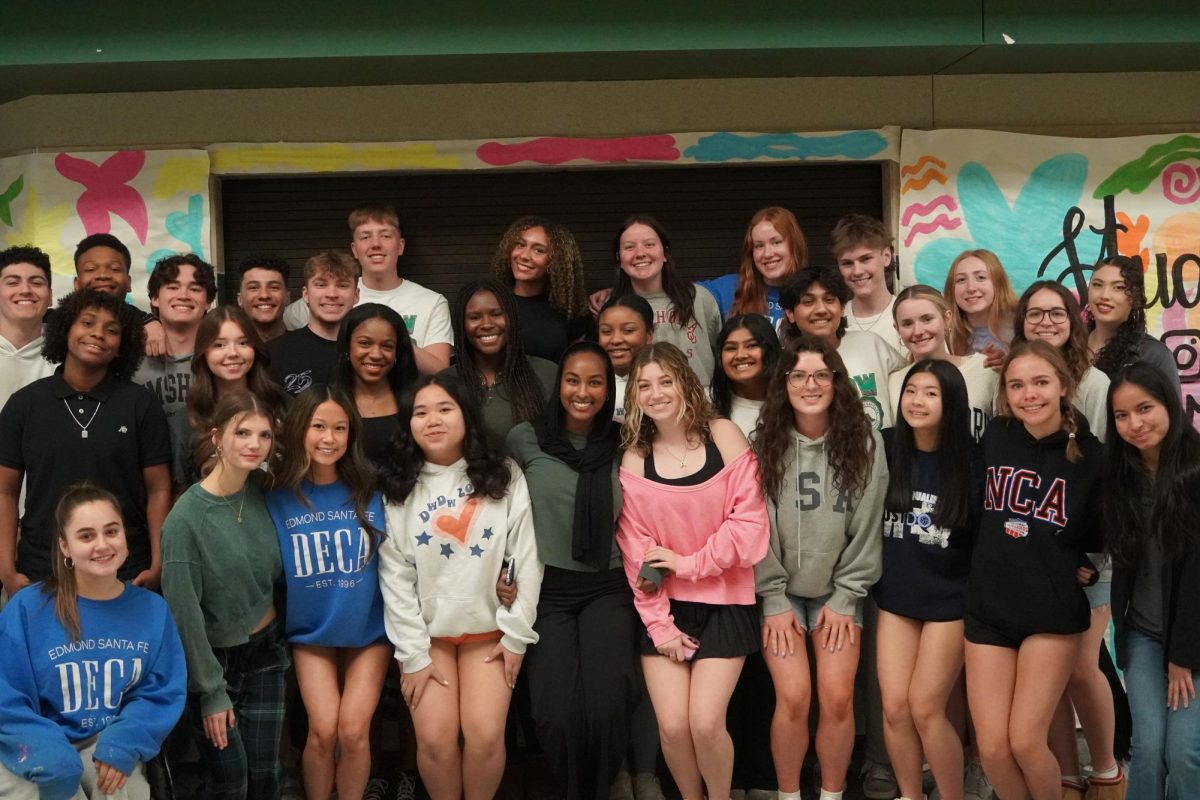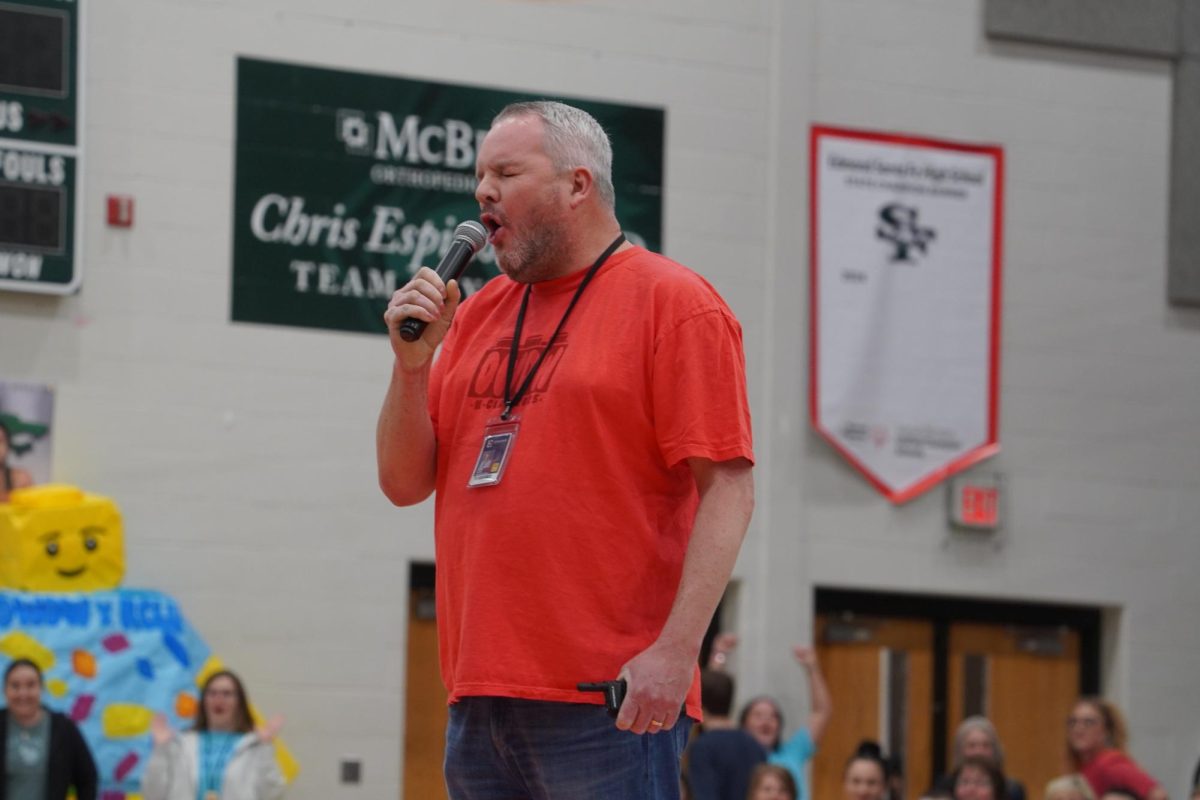Being a multiracial person, I consistently get asked “what are you” as if it’s a question about identity, not ethnicity. But, because I am open to curiosity, I willingly answer “Black, Native and German.” One thing I have noticed throughout the years of responding to the daunting “what am I” question, is that there is always one consistent follow up question, “how much Native are you?”
When I was younger, I used to answer this question with pride because I didn’t understand the problem with the question. But, as I’ve grown, I’ve come to realize that this question is so deeply rooted in American history that many Americans don’t realize their own ignorance.
The phrase “In 1492, Christopher Columbus sailed the ocean blue” is one that is and has been used for decades by teachers to introduce the idea of colonialism to their students. In American history, it’s common to state the colonizer first before the colonized.

But, nonetheless, the Italian oppressor did in fact sail to the Americas (what he thought was India). On his first day in the Americas, he met the Taino tribe and within 24 hours of his time there he ordered six of them to be slaves. This mistreatment from the beginning would result in 313 years of war between the Europeans and First Americans, and arguably this “war” has continued to today.
Some of the most memorable wars:
“The Seven Years’ War” or the “French and Indian War” was a war between the French and British Empires over land claims of the American Territories. At this point the French had already been assimilating and converting a lot of Natives to Catholicism so they were forced to assist them in the war. Also, the French never wanted to steal the Native’s land, they saw them as a resource for trading but also reproducing and making families with (though that part of the ordeal was usually involuntary). Because of this, a lot of Natives wanted to help them win because at least for the time being they could keep their land. Unfortunately, the British Empire won because France ceded to Canada and the war on land continued for the Indigenous peoples. This would blossom the Proclamation line of 1763.
Pontiac’s rebellion was a war that followed the Seven Years’ War that was between the Algonquian, Iroquoian, Muskogean and Siouan-speaking Native Americans following the Seven Years’ War. The colonists and natives were fighting in the Ohio River Valley. This war was over the land that we now know as “Ohio” because the soil and water of that land was perfect for farming. Although the war ended in a draw after two years, the British empire was forced to change their policies towards the Native people and recognise their indigenous autonomy.
The war was fought in Montana Territory at the Little Bighorn River. The Cheyenne and Lakota tribes were led by Sitting Bull of the Lakota tribe. The Lakota and Dakota (Yankton) Sioux and Arapaho non-reservation people were guaranteed exclusive possession of the Dakota territory west of the Missouri River Second by the Treaty of Fort Laramie (1868) but, white miners in search of gold were beginning to settle in the lands and trying to force the indigenous people out. Unwilling to remove the settlers and unable to persuade the Lakota to sell the territory, the U.S. government issued an order to the Tribes that all Natives must go to their assigned reservation by January 31, 1876, or be deemed hostile. Getting the message out, coupled with its rejection by all of the Natives, made confrontation inevitable.
This massacre was responsible for the deaths of approx. 150-300 Lakota Natives by American army troops in Wounded Knee Creek in southwestern South Dakota. This “Battle” would be the climax for the series of wars that happened to try and repress Native American resistance to giving up their land and being put on reservations.
Sadly the list can go on.

In 1830, President Andrew Jackson proposed the Indian Removal Act. This would become a federally recognized act to remove all Indigenous peoples of the Cherokee, Creek, Choctaw, Chickasaw and Seminole tribes from their ancestral land and relocate them to Oklahoma for white settlers to come steal their land.
These people were put into camps that are commonly known as reservations. If you want to know the severity of these areas, Hitler modeled concentration camps after them.
These reservations would also blossom the idea of the blood quantum system. Blood quantum was initially a system that the federal government placed onto tribes in an effort to limit their citizenship. The blood quantum system can be related to the “one drop rule” that was used for black people in the 20th century.
The one drop rule measured the amount of “black blood” that black people had in society and ensured that every person who had at least one drop would be considered black and would be covered under these discriminatory laws and, even in the earlier days, enslaved.
“Blood quantum emerged as a way to measure “Indian-ness” through a construct of race,” said NPR ‘Code Switch’ writer, Kat Chow. “So that over time, Indians would literally breed themselves out and rid the federal government of their legal duties to uphold treaty obligations.”
To this day, many Native nations, including but not limited to the Navajo Nation and Turtle Mountain Band of Chippewa Indians, continue to use the blood quantum system to regulate who can and cannot be enrolled.
Why are we still using methods that were given to us by oppressors?
Some Native tribes have grown from the blood quantum system though and found better ways to let their tribe continue to grow. The Lakota Sioux Tribe of South Dakota uses the lineage system. What this system entails is that you must have some sort of documentation proving that you are a direct linear relative of a descendant in the tribe. This system is more inclusive to so many people that identify as native despite being less than a ¼ Native American.
The blood quantum system will eventually make the Native Tribes in America die out and the history and stories will as well.
There are obviously so many things that America as a whole can do better in the journey to becoming more educated on the First American People but there are small things that can be done to prompt this path:

- Changing the federally recognized term “American Indian” to Indigenous, Native American or First Americans.
- Making classroom curriculums more honest about the truths of Native American history.
- Stop stealing their land for oil marketing.
- Not making the Native American culture a costume.
- Not making team mascots that mock Native American culture.
- Give more funding to the tribes so that they are not living in filth.
- Making it easier to become a federally recognized tribe.
- Not working to cover up the obvious oppression of Native Americans.
- Speak about the oppressed more than the oppressors.
- Be willing and open to learning and becoming educated by those who have been oppressed.
If you’re a reader who isn’t Native American but is interested in learning more about the culture and history there are a multitude of things you can do. Visit the First Americans Museum in Oklahoma City. It’s a museum whose goal is to educate people about the First Americans of Oklahoma. ( Fun Fact: The Choctaw people named the land we now know as “Oklahoma”, “Okla Homma” which means “red people”)

There is a great book, “Killers of the Flower Moon: The Osage Murders and the Birth of the FBI” by David Grann, that depicts the story of the Osage people, specifically the murders of Mollie Kyle’s family. But, if you’re not into reading there is a blockbuster movie that just came out that depicts the exact story.
There are a multitude of things you can do to better educate yourself, you just have to take the first step.
While you’re here please take a moment to look at this —–> Missing and Murdered Indigenous Women





































